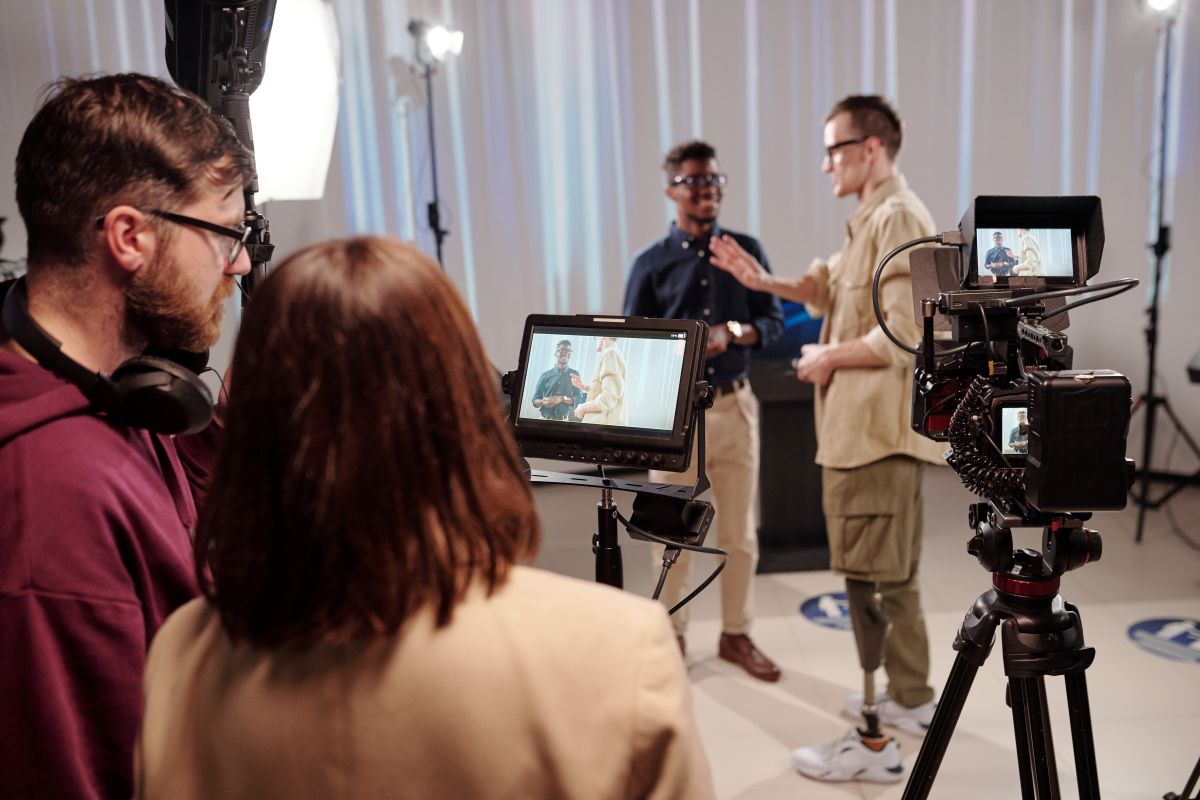
Video Production Companies in Johannesburg: Dual Coding
Corporate communication has a lot riding on it—whether it is training staff, introducing a new service, or sharing quarterly updates. Still, even the most well-intended message can get buried under too many slides, too much text, or just not enough clarity. People tune out, not because they want to, but because their brains are overwhelmed. This is where Dual Coding Theory steps in—not as a gimmick, but as a model for understanding how information is processed. Developed by psychologist Allan Paivio, the theory explains how humans absorb information through two separate systems: verbal (words) and non-verbal (images). When both are used together and intentionally aligned, the brain builds stronger associations, making the message easier to follow and remember. This is particularly relevant in video, where audio and visual elements meet by design. Video production companies in Johannesburg work with this dynamic every day, creating content where visuals and voiceovers reinforce each other instead of competing for attention. Let’s take a look at how Dual Coding Theory works, why it matters, and how it is applied in corporate video production.
Decoding Dual Coding Theory
At its core, Dual Coding Theory is based on the idea that the brain stores verbal and visual information in different “codes” or systems. When these codes are activated together—like hearing someone explain a process while watching that process on screen—there is a greater chance that the information will stick.
This is not a fringe idea. It is supported by a growing body of research in educational psychology, cognitive science, and media studies. Studies, such as those reviewed in The Cambridge Handbook of Multimedia Learning, confirm that integrated content—where visuals support spoken explanations—leads to improved understanding and memory performance.
When applied to video, this theory explains why some content feels easier to absorb. It also sheds light on why other content feels confusing, even if it is technically correct. A poorly aligned script and visual can cancel each other out, leaving the viewer unsure of what to focus on. This is where video production companies in Johannesburg can make a noticeable difference by ensuring that both channels work in sync.
Strategic Application in Corporate Video Production
Dual Coding Theory is not just academic—it is practical. Here is how it shows up across different types of corporate videos:
Training Modules:
Consider a health and safety video. Hearing a narrator explain procedures while watching a simulation helps reinforce the information. Employees do not just hear what to do—they see it. The result? Fewer repeated questions, more confidence in the task, and less room for error. Video production companies in Johannesburg regularly develop these types of modules, paying close attention to when and how visuals complement instruction.
Marketing Campaigns:
Marketing often deals with abstract ideas—values, benefits, experiences. When visuals illustrate these ideas while narration provides context, the result is easier to understand. A product demonstration video, for example, can show real-world use cases while briefly explaining how it helps the viewer. Again, alignment matters, and video production companies in Johannesburg are often involved in making sure the message and visuals work together without feeling disjointed.
Internal Communications:
From performance metrics to organisational changes, internal updates can be dense. A narrated animation showing quarterly targets or a timeline of structural changes can help employees grasp what is happening and why. Instead of forcing staff to read another document, video can lighten the cognitive load. Video production companies in Johannesburg are well-positioned to help turn these communications into visual briefings that people can actually absorb.
Designing Videos with Dual Coding in Mind
So, how do you design a video that makes use of Dual Coding Theory without overcomplicating things? It comes down to a few practical choices:
Content Alignment:
The visual must support the verbal—not compete with it. If someone is explaining how a software interface works, the video should show that interface, not stock footage of a person typing. This kind of alignment helps the brain form accurate connections. Video production companies in Johannesburg often storyboard scenes with this exact consideration.
Visual Clarity:
Cluttered visuals dilute attention. Icons, motion graphics, and footage should be used with intent. Viewers are not looking for a visual puzzle to solve; they are trying to understand what is being explained. Experienced video production companies in Johannesburg can help select visuals that match the tone, subject, and pace without distractions.
Pacing and Synchronisation:
If the narration races ahead of the visuals—or vice versa—the viewer falls behind. Synchronisation between what is said and what is shown helps maintain attention. For instance, when explaining a process, having the visual element match the moment of explanation avoids confusion.
Audience Consideration:
Different viewers process information differently. A technical team might appreciate detailed diagrams, while a general audience may benefit from simplified visuals and clear voiceovers. Adjusting visual and verbal content based on who will be watching is a subtle but important step—something video production companies in Johannesburg are accustomed to managing through pre-production research.
Empirical Evidence and Case Insights
It is one thing to describe a theory, and another to see how it holds up in practice. Fortunately, studies continue to support the usefulness of dual-coded content.
For example, Mayer’s Cognitive Theory of Multimedia Learning, often cited alongside Dual Coding Theory, has shown that students perform better when lessons include both visuals and narration compared to either alone. The same logic applies to workplace learning and business communications. A report by The Journal of Educational Psychology found that viewers of dual-coded instructional videos performed significantly better on post-viewing assessments.
Conclusion: Elevating Corporate Messaging through Cognitive Principles
Dual Coding Theory offers more than just a fresh perspective—it offers a framework grounded in how people actually think and learn. By using visuals and narration together, companies can reduce mental strain and increase message clarity, whether for customers, partners, or internal teams.
Of course, doing this well takes planning. The visuals need to align with the script, and the script needs to avoid saying what is already obvious on screen. This balance is part of the everyday workflow for video production companies in Johannesburg, who translate these cognitive principles into videos that inform, clarify, and support communication goals. With video becoming a common format for corporate communication, understanding the psychology behind effective content becomes a practical necessity.
You do not need to know your hippocampus from your hard drive to make a smart video—just a team that knows how to use both sides of the brain. Sound Idea Digital is here to help with that. Reach out when you are ready to start a project.
We are a full-service Web Development and Content Production Agency in Gauteng specialising in Video Production, Animation, eLearning Content Development, Learning Management Systems, and Content Production.
Contact us for a quote. | enquiries@soundidea.co.za | https://www.soundideavideoproduction.co.za| +27 82 491 5824 |

